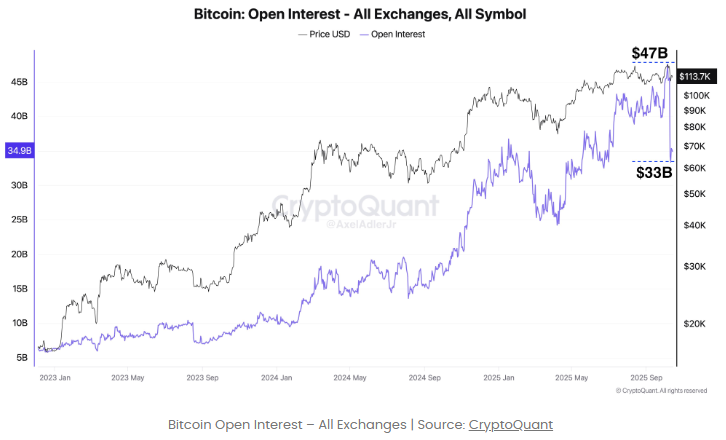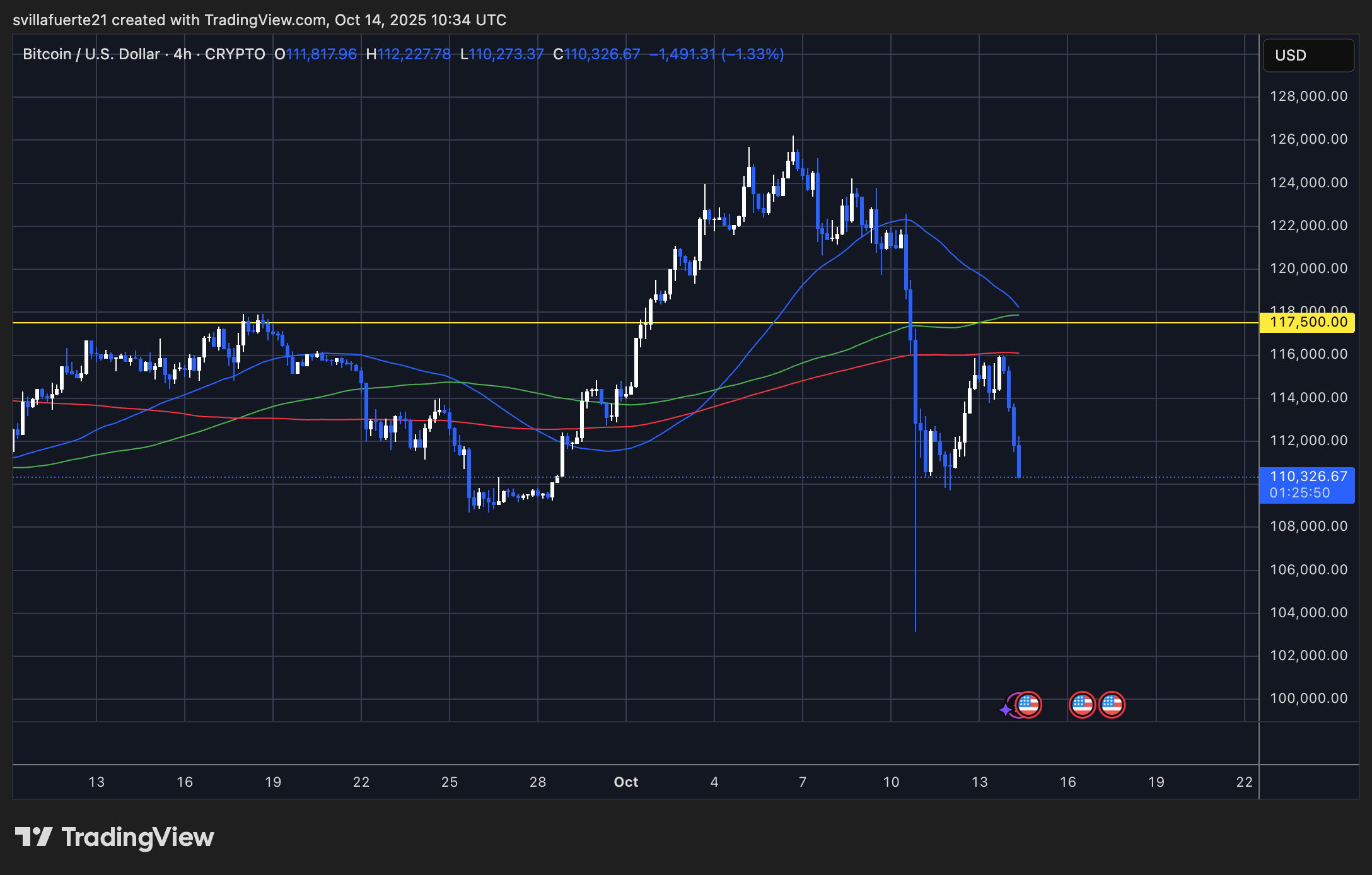After being rejected from the $116,000 supply zone, Bitcoin is testing a key support level near $110,000, which is currently a major point of contention between bulls and bears. Markets remain vulnerable following the historic volatility from Friday’s selloff. The crash wiped out billions of dollars in leveraged positions and created uncertainty.
Prices have managed to stabilize above key moving averages at the moment, but momentum appears to be weakening as buyers struggle to absorb continued selling pressure. Some analysts have warned that if Bitcoin fails to maintain this zone, a deeper correction towards the $105,000 to $107,000 area could follow, leading to another swing back before a potential recovery.
Top analyst Axel Adler shared new data that reveals the scale of Friday’s events. According to his analysis, spot trading volume surged to $44 billion, near cycle highs, while futures trading volume reached $128 billion. More notably, open interest decreased by $14 billion, but only $1 billion of that was due to BTC long liquidations. Adler explained that this was a controlled deleveraging event rather than a liquidation cascade, suggesting that market participants manually reduced risk rather than being forcibly removed. Still, volatility remains elevated as Bitcoin struggles to maintain structural support.
A controlled reset amid growing fear
According to Axel Adler, the recent market crash has revealed an important but underappreciated aspect of Bitcoin’s maturity. According to the data, 93% of the $14 billion in open interest (OI) lost during Friday’s selloff was unforced, meaning it was not the result of automatic liquidations. Instead, traders and financial institutions chose to manually deleverage and close positions to protect their capital. Adler describes this as “controlled deleveraging,” and it stands in stark contrast to previous cycles in which similar crashes often triggered a chaotic cascade of liquidations.

This move marks a turning point in Bitcoin’s market structure. This indicates that participants, especially institutional investors, are managing risk more carefully, reinforcing a more stable and mature trading environment. In past cycles, rapid liquidations have often caused extreme volatility, magnifying losses overall. But this time, markets handled the unprecedented stress with relative discipline.
Yet, despite this sign of structural maturity, the emotional landscape has changed dramatically. Uncertainty is spreading across the market as Bitcoin loses value and hovers around the $110,000 to $112,000 support zone. Many short-term traders are exiting their positions, while long-term holders are reevaluating their exposure amid heightened uncertainty. Adler points out that this stage – when fear peaks and confidence wanes – often determines the next direction of the market.
If demand returns at these levels, Bitcoin could see a healthy reset before the next rally. However, failure to maintain support could test investors’ beliefs and could send BTC into a deeper correction phase before widespread accumulation resumes.
Bitcoin maintains important support, but momentum weakens
Bitcoin is currently trading around $110,300, sitting in a major support zone after renewed selling pressure on the market. The 4-hour chart shows that Bitcoin has failed to break out of the $116,000 to $117,500 resistance range and is struggling to maintain its upward momentum. This resistance range is a level that acted as strong demand during the previous rally.

A rejection from this area triggered a sharp rebound, sending BTC below both the 50 EMA (blue line) and 200 EMA (red line). This is a sign that the short-term structure is weakening. Price is currently testing horizontal support around $110,000, which is consistent with the consolidation range of late September. A clear breakdown below this level could expose Bitcoin to further downside, with the next potential support likely around $106,000 to $107,000.
Despite the bearish tone, oversold signals are starting to appear on lower time frames, suggesting a possible temporary pullback if the bulls can successfully defend this zone. For a sustainable recovery, Bitcoin needs to regain $114,000 and reestablish itself above the short-term moving average. Until then, the market remains in a fragile equilibrium, with bulls defending key supports and bears continuing to control short-term momentum. The next few sessions will determine the direction of BTC.
Featured image from ChatGPT, chart from TradingView.com


